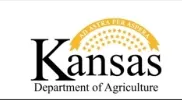Safety, design top priorities when designing cattle processing facilities
Sept. 29, 2020
K-State experts say facilities should be safe for people and cattle
MANHATTAN, Kan. — Many a rancher will say there is nothing that tests the bonds of a relationship more than processing cattle together. Between the quick movements of the calves and the short tempers of the humans it can be a trying experience for all.
One way to help ease some of the potential for frustration is to make sure cattle are worked through good facilities.
Remodeling or overhauling cattle facilities was the topic of discussion on a recent Kansas State University Beef Cattle Institute Cattle Chat podcast featuring K-State veterinarians Bob Larson and Brad White, beef cattle extension specialist Bob Weaber and special guest Chase DeCoite, beef quality assurance director with the National Cattlemen’s Beef Association.
“It is important to know how you are going to use your facilities when planning a remodel of them,” DeCoite said.
And Weaber said that starts with evaluating your current set-up.
“Look at the age of the facility and the types of materials within the structure,” Weaber said. “If the facility is 50 years old with gates made of wood panels patched together and there are drainage issues, it might be time for a total rebuild.”
In that case, Weaber advised producers reach out to a local soil conservation district professional, Extension watershed specialist, or an environmental specialist with your state Department of Health and Environment or Department of Agriculture to help plan the location of the new facility and assist with permitting.
However, the experts agreed that a total rebuild isn’t always needed and that many facilities can be improved with a remodel that will strengthen the pens and improve safety for all involved.
“Any cattle handling facility needs to be safe for both the people and the cattle,” Larson said. “The materials need to be sturdy and the gates need to be placed so that people can open them safely and cattle can move through them easily.”
To test the people placement and cattle flow, DeCoite recommended that cattle producers move the animals through their facility without actually applying any processing procedures. In doing so, he said, cattle producers are training the cattle on how to move through the facility.
“This will allow you to see how cattle and people are interacting within your facility and help you design a better system,” DeCoite said.
Along with that, White advised producers to to use other producers’ facilities in order to identify features that they like and that they want to avoid for their own facilities.
“They may use other equipment, which will allow you to observe the pros and cons of their cattle handling systems,” he said.
White also encouraged cattle producers and their employees to attend a stockman’s training to get advice on how to best work with the cattle.
Here were the top tips that the experts offered when planning a facilities remodel:
- Determine the appropriate scope of the project. Is it a simple repair or an involved remodel?
- Attend a stockman’s school to learn how to best use the facilities.
- Visit other facilities to do research.
- Consider both human and cattle safety in the design.
- Build with the appropriate size and strength of materials for your class of animals.
- Plan accordingly to make sure you are maximizing the facilities investment.
To hear the full discussion on facilities remodeling, listen to the BCI Cattle Chat podcast.
FOR PRINT PUBLICATIONS: Links used in this story
Beef Cattle Institute podcast, https://ksubci.org/media/podcast-2
K‑State Research and Extension is a short name for the Kansas State University Agricultural Experiment Station and Cooperative Extension Service, a program designed to generate and distribute useful knowledge for the well‑being of Kansans. Supported by county, state, federal and private funds, the program has county extension offices, experiment fields, area extension offices and regional research centers statewide. Its headquarters is on the K‑State campus in Manhattan. For more information, visit www.ksre.ksu.edu. K-State Research and Extension is an equal opportunity provider and employer.
Story by:
Lisa Moser
785-532-2010
More information:
Bob Larson
785-564-7457
Bob Weaber
785-532-1460
Brad White
785-564-7463




